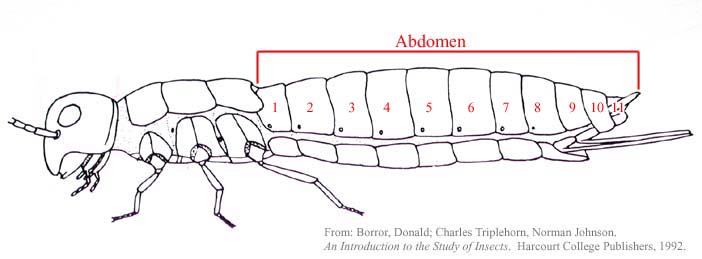 |
Definitions
Below is a glossary of insect morphology terms. Click on linked words for illustrations.
Abdomen: Third and last section of
the insect's body, usually having 10 segments:
 |
Antenna (pl. antennae): Appendages on
the head of the insect, usually paired and segmented. Antennae are
made up of three basic segments: the scape, pedicel, and flagellum
which is in turn made up of multiple flagellomeres. Antennae come
in various forms depending on how the insect uses them. These different
forms are often very useful in identifying insects. They include:
Setaceaous (bristled) |
Filiform (threadlike) |
Moniliform ("beaded") |
Serrate (sawlike) |
Pectinate (comblike)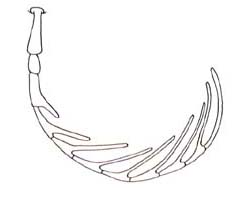 |
Clubbed (clubbed) |
Geniculate (elbowed)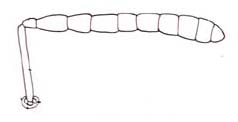 |
Plumose (feathery)
 |
Aristate (bulbous with a filament) |
Stylate (stylated)

from Borror, Donald et al., 1992
|
Abdominal appendages: Either filaments
or cerci. Abdominal filaments are thread-like processes located at
the end of the abdomen. Cerci are shorter, usually scleritized appendages
of the last segment of the abdomen.
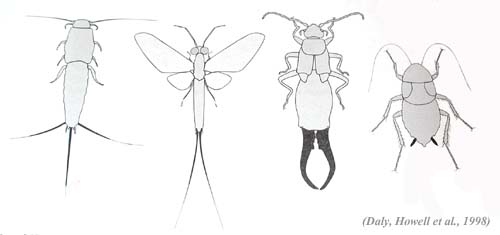 |
Haltere (pl. halteres): Modified
wing structure resembling knobs. Found in the place of the hind wings
in Diptera and forewings in Strepsiptera. Function as gyroscopic
instruments in flight:
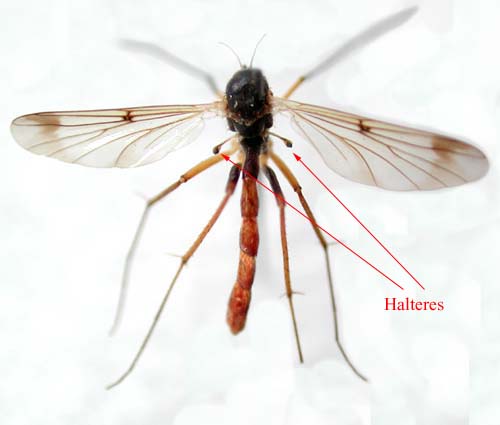 |
Haustellate: Sucking. refer to "mouthparts"
Head: First section of the insect's
body:
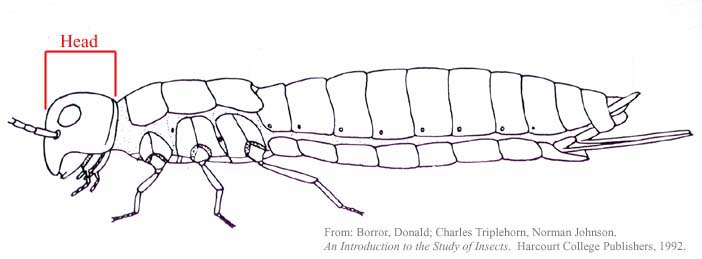 |
Hypognathous: Mouthparts directed downward toward the ground.
Used for grazing:
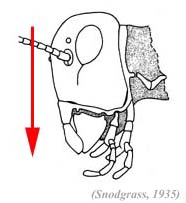 |
Mandibulate: Chewing. refer to "mouthparts"
Mandibulate: "Chewing" mouthparts. Scleritized mandibles ('jaws') which move side to side for biting and chewing food particles.
Haustellate: "Sucking" mouthparts. Often form tubular structures including beaks, probosces, and rostra:
Beak Proboscis Rostrum
Opisthognathous: Mouthparts that are directed backward
below the insect's body:
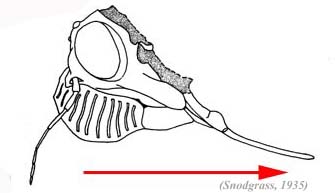 |
Prognathous: Mouthparts that are directed forward infront
of the insect:
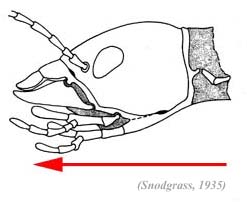 |
Scleritization: Hardening of insect exoskeleton to make a strong, armor-like 'skin'.
Tarsus (pl. tarsi): Last section of insect legs which are made up of several segments called tarsomeres. (see below)
Tarsomere (pl. tarsomeres): Segments of the tarsus:
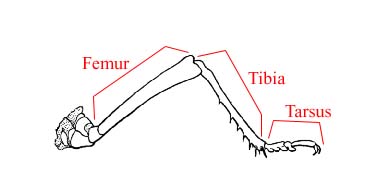 (Snodgrass, 1995)
|
Thorax: Middle section of the insect's
body, having three segments consisting of the prothorax, mesothorax, and
metathorax. The prothorax holds the front pair of legs. The
mesothorax holds the second pair of legs and the front pair of wings.
The metathorax holds the third pair of legs and the hind wings.
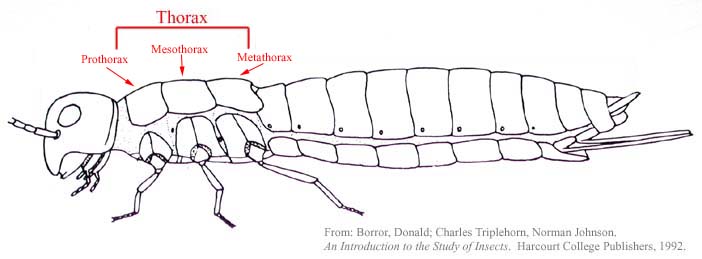 |
Wings: Appendages used for flight.
Insects with wings have either one or two pair. If a second pair
is absent, halteres are often in the place of the missing pair (refer to
halteres). Wings may be membranous or scleritized. Scleritized
wings may be in the form protective elytra (in coleoptera) or tegmina (in
orthoptera). The scleritized forewing covers the membranous hind
wing and protects it from undue wear and tear. Membranous wings are
usually highly veined with membrane between (hence 'membranous'), although
the membrane may be covered with scales as in butterflies (lepidoptera).
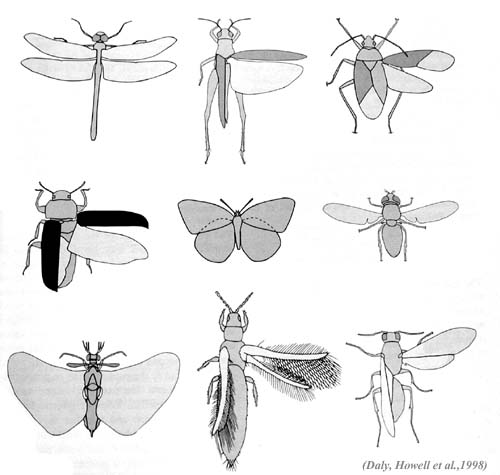 |